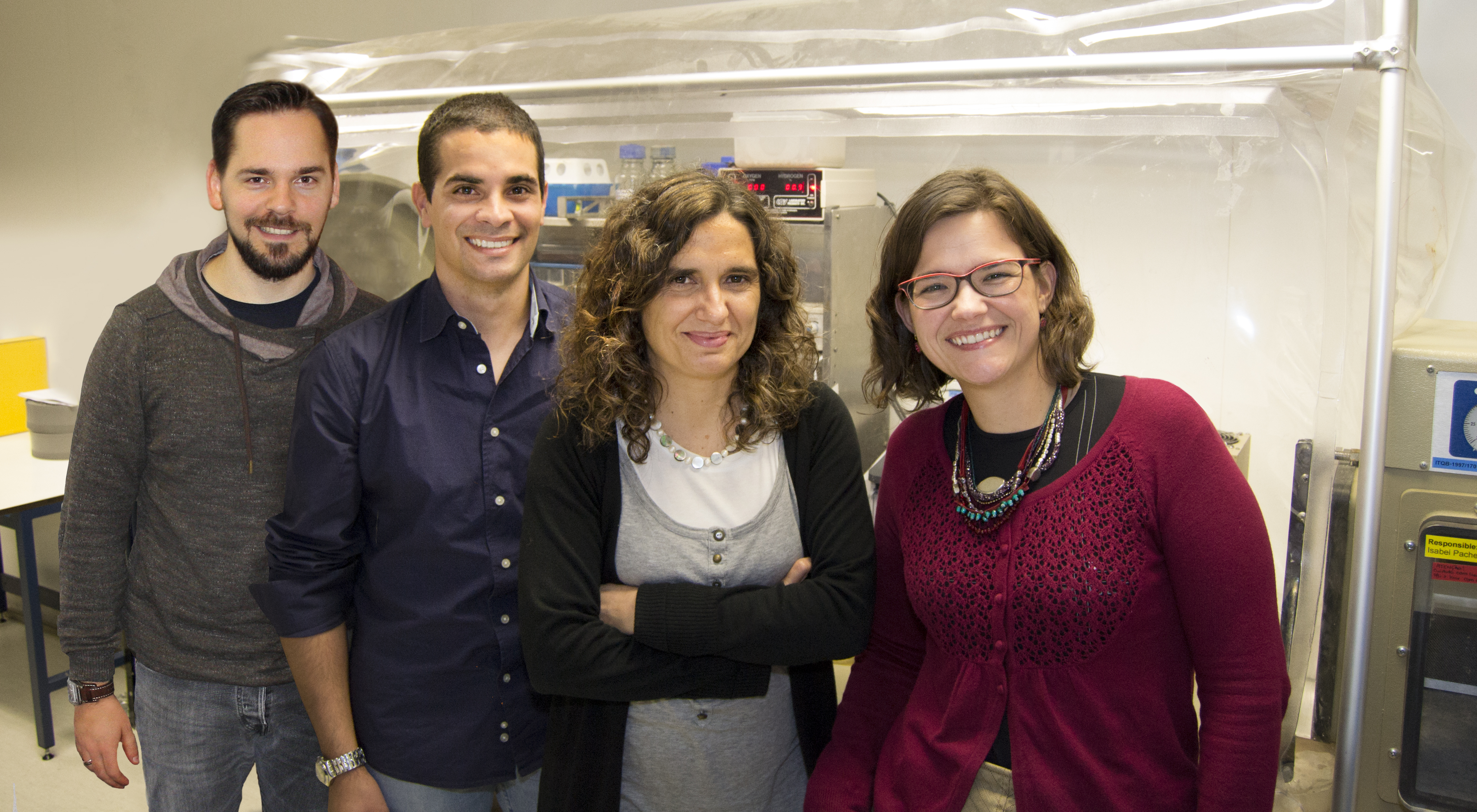A fresh look at sulfur metabolism
Oeiras, 18.12.2015
When looking at science textbooks it’s easy to miss the dynamic aspect of science. Scientific discovery progresses in incremental steps, but once in a while a single article challenges textbook knowledge and requires other scientists to revise their working models. The latest paper by Inês Cardoso Pereira’s Lab and collaborators, published this week in Science, does just that, in what concerns sulfur metabolism and the Earth´s biogeochemical sulfur cycle.
“As with the more widely known carbon cycle, the sulfur cycle is essential to life”, explains Inês C. Pereira, who coordinated the study. This cycle is driven by bacteria that breathe sulfur, just like we breathe oxygen, to obtain energy from food. The main players in the cycle are the so called sulfate reducing bacteria, which are widespread in anoxic environments, such as marine sediments. These bacteria also play a role in health, as they are present in our gut, where the products of sulfate processing can cause inflammatory bowel diseases. “The question was that no one knew precisely how these microorganisms were able to obtain energy from reducing sulfate”, says IC Pereira.
Textbooks describe sulfate metabolism as a three step pathway: from sulfate (the most oxidized form of sulfur) to sulfite and from sulfite to sulfide (the most reduced form of sulfur). Researchers found that there is a new intermediary between sulfite and sulfide, turning the process into a four-step pathway. This intermediate step finally explains how sulfite reduction can be connected to energy production. “Energy production requires the formation of an asymmetry of charges across a membrane but there was nothing connecting sulfite reduction to the membrane. With this new intermediate we found a connection”, explains IC Pereira.
After the publication of this paper, several things will have to change. “Textbooks will need to be revised, of course”, says the researcher, “and geochemists should incorporate the revised pathway into their working models, which rely on sulfur metabolism to interpret the redox history of Earth over geological times”. What about consequences for health? “Well, the fact that we discovered the mechanism of an important step in the pathway means we now have a direct target for inhibiting the pro-inflammatory action of sulfate reducing bacteria in the gut. We already started working in that direction”, she adds.
To ITQB-NOVA Director Cláudio Soares, “this paper is an excellent example of how our research in molecular biosciences contributes to answering basic biological questions and, at the same time, uncovering potential applications”. And he continues: “Congratulations to the researchers involved for a well-deserved recognition of their solid work”.
In the same issue, Science includes a Perspective by Günter Fritz (University of Freiburg, Germany) and Peter M. H. Kroneck (University of Konstanz, Germany), highlighting the importance of this work: "Santos et al. now use an array of elegant biochemical, genetic, and physiological in vitro and in vivo experiments, in combination with mass spectrometry (...) The discovery of the trisulfide in DsrC as the product of sulfite reduction represents major progress in understanding microbial sulfur conversion".
This work was developed at ITQB-NOVA (Portugal), and also involved collaborators from Harvard University (USA), and the University of Bonn (Germany).
|
Sulfite reduction by DsrAB and DsrC
|
|
|
Left to right: Fabian Grein, André Santos, Inês C. Pereira, Sofia Venceslau |
Original Article
Science (2015) 350 (6267):1541-1545 DOI: 10.1126/science.aad3558
A protein trisulfide couples dissimilatory sulfate reduction to energy conservation
André A. Santos,1* Sofia S. Venceslau,1* Fabian Grein,1 William D. Leavitt,2,Christiane Dahl,3 David T. Johnston,2 Inês A. C. Pereira1
1- ITQB
2 - Harvard University, USA
3 - Universität Bonn, Germany
*These authors contributed equally to this work.
Perspective
Sulfate to go: A trisulfide intermediate is key to microbial sulfur reduction
By Günter Fritz1 and Peter M. H. Kroneck








